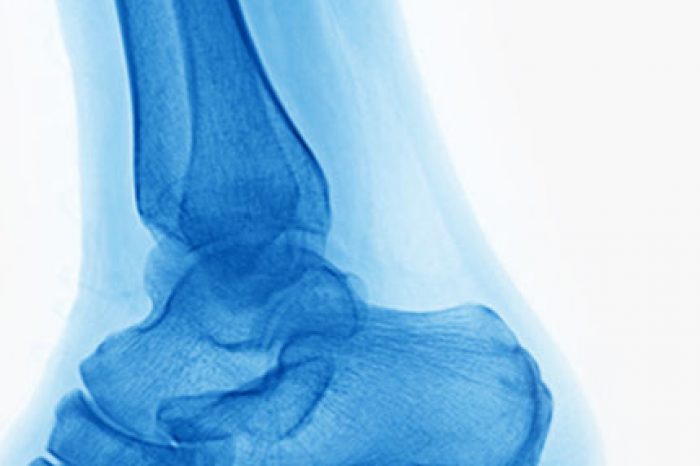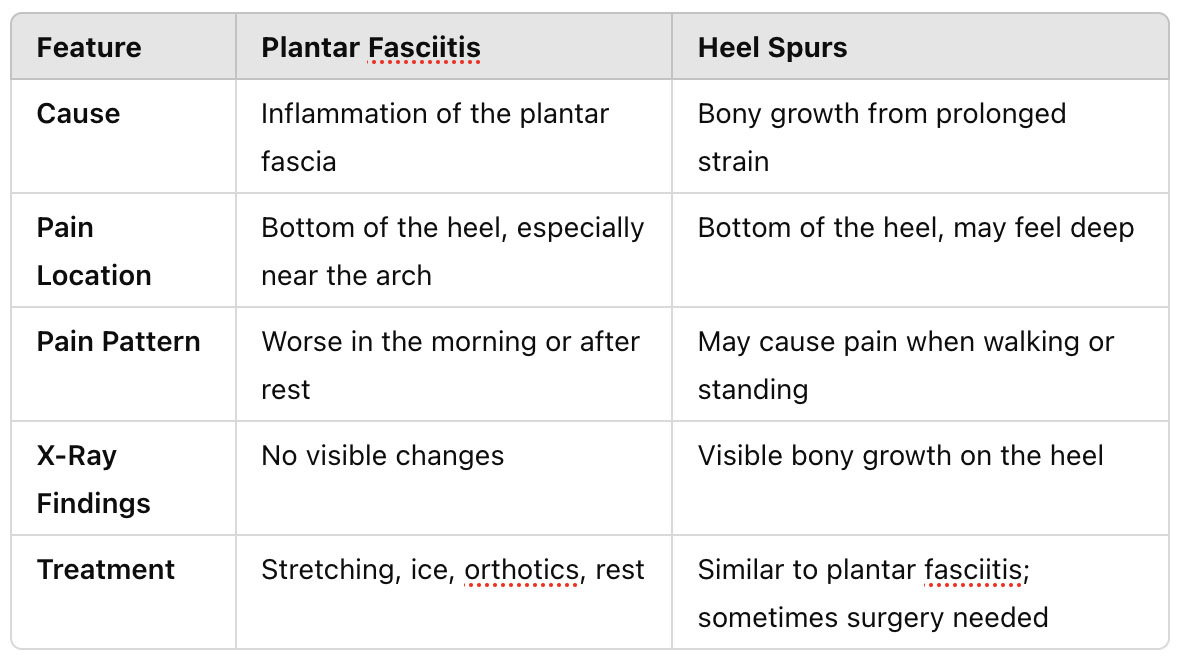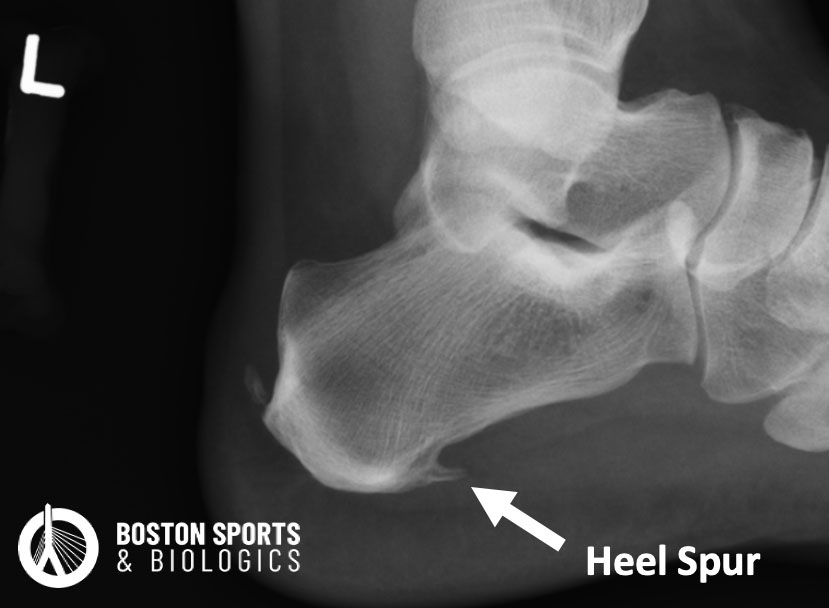
Heel pain can be frustrating and debilitating, especially if you're active or on your feet for long hours. Two of the most common causes of heel pain are plantar fasciitis and heel spurs. While they share similar symptoms, they are distinct conditions requiring different treatments. Understanding the difference between plantar fasciitis and heel spurs can help you find the most effective relief and prevent future discomfort.
Plantar fasciitis is due to degenerative changes to the plantar fascia, a thick band of tissue that runs along the bottom of your foot, connecting your heel to your toes. This condition is thought to be due to excessive strain or stress on the fascia, leading to tiny tears and pain [Trojian & Tucker, 2019; Goff & Crawford, 2011; Thomas et al, 2010].
A heel spur is a bony growth (calcium deposit) that develops on the bottom of the heel bone due to long-term strain on the plantar fascia or Achilles tendon. Heel spurs often develop as a response to chronic plantar fasciitis, but they do not always cause pain [Thomas et al, 2010; Kirkpatrick et al, 2017; Kumai & Benjamin, 2002].

If conservative treatments don’t work, a doctor may recommend:

If your heel pain persists for more than a few weeks despite home treatments, it’s time to consult a specialist. A sports medicine physician can perform imaging tests like x-rays, ultrasound or MRIs to confirm the diagnosis and recommend tailored treatment options.
Plantar fasciitis can cause significant heel pain, but understanding the difference between plantar fasciitis and heel spurs is key to effective treatment. While plantar fasciitis is a painful degenerative condition, heel spurs are bony growths that often are not be painful. Most cases can be managed with proper footwear, stretching, and conservative treatments. If your pain persists, don’t hesitate to seek professional care to get back on your feet pain-free.
Need expert advice on your heel pain? Contact our sports medicine clinic today for a personalized evaluation and treatment plan!
(781) 591-7855
20 Walnut St
Suite 14
Wellesley MA 02481
References:
Adductor longus selective tenotomy is a modern surgical treatment for chronic groin pain that offers faster recovery and better outcomes than traditional full release surgery. The adductor longus, an inner thigh
Read MoreDiscover how ultrasound helps diagnose plantar fat pad atrophy, a leading cause of ball-of-foot pain. Learn about symptoms, thickness cutoffs, and why early detection matters for relief.
Read More